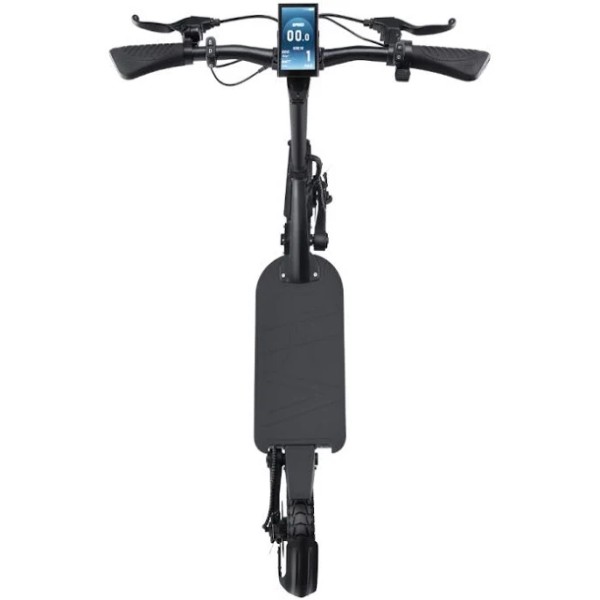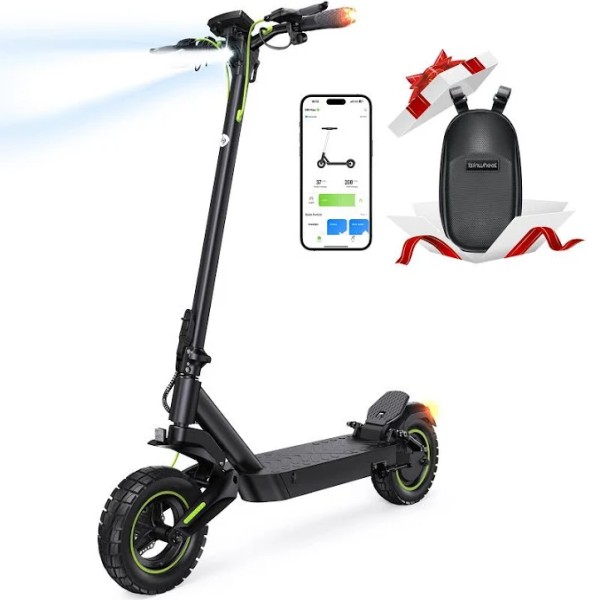Introduction
Electric scooters have become a popular mode of transportation, offering convenience and efficiency for urban commuters and casual riders alike. However, like any electronic device, electric scooters can encounter issues that hinder their performance. One of the most frustrating situations a rider can face is when their electric scooter won’t turn on or charge. This problem can disrupt daily commutes, weekend outings, or leisurely rides, leading to a sense of inconvenience and confusion. Understanding the common causes behind this issue and knowing how to troubleshoot effectively can save you time and potential repair costs. In this comprehensive guide, we will explore the various reasons why your electric scooter may not be functioning correctly, offer solutions to get it back up and running, and provide maintenance tips to prevent future problems. By the end of this article, you will have all the information necessary to solve the issue of your electric scooter not turning on or charging, getting you back on the road in no time.
Understanding Electric Scooters and Their Components
Before delving into specific troubleshooting tips, it’s helpful to grasp the fundamentals of how electric scooters work and the key components that may influence performance.
1. Components of an Electric Scooter
Electric scooters comprise several crucial components that contribute to their functionality. Understanding these parts can help pinpoint issues when troubleshooting.
- Battery: This rechargeable battery serves as the power source for the scooter. It typically comes in lithium-ion or lead-acid varieties and significantly impacts the overall performance of the scooter.
- Motor: The electric motor propels the scooter and varies in power depending on the model. The power rating influences speed, acceleration, and climbing capabilities.
- Controller: The controller acts as the brain of the electric scooter. It manages the flow of electricity to the motor and other components based on user input, such as throttle and brakes.
- Charger: The charger ensures the battery receives the correct amount of energy during recharging. Using the appropriate charger is vital for battery health.
2. How Electric Scooters Function
The fundamental operation of electric scooters involves converting electrical energy stored in the battery into mechanical energy through the motor. When the rider provides input via the throttle, the controller engages the motor, allowing the scooter to move.
Over time, wear and tear on these components can lead to performance issues, including the scooter not turning on or charging. Familiarity with these components aids in effective troubleshooting, as different parts can be responsible for any problems encountered.
Common Reasons Why Your Electric Scooter Won’t Turn On or Charge
Recognizing the potential causes of an electric scooter not turning on or charging is essential for effective troubleshooting. Below are some common issues to consider:
1. Battery Issues
Battery problems represent the most common cause when an electric scooter won’t turn on or charge. Several factors can affect battery performance:
- Depleted Battery: If the scooter has not been used for an extended period, the battery may have completely drained. Most lithium-ion batteries retain a small amount of charge; however, prolonged inactivity can lead to depletion.
- Aged Battery: Over time, batteries lose their ability to hold a charge. If the battery is several years old, its capacity may have diminished significantly.
- Damaged Battery: Physical damage, exposure to extreme temperatures, or incorrect charging practices can lead to battery failure, preventing the scooter from functioning.
2. Charger Malfunction
The charger plays a vital role in the charging process. If your electric scooter won’t turn on or charge, consider the following charger-related issues:
- Faulty Charger: A malfunctioning charger may fail to deliver power to the battery. Look for visible signs of damage, such as frayed cables or a broken adaptor.
- Improper Connection: Ensure that the charger is properly connected to both the scooter and the power outlet. Loose connections can interrupt the charging process.
- Incompatible Charger: Using an incorrect charger for your electric scooter can lead to ineffective charging and potential damage.
3. Controller Failures
The controller manages the flow of electricity within the scooter. If it malfunctions, it can prevent the scooter from starting or charging. Potential issues include:
- Electrical Faults: A short circuit or electrical fault in the controller can interfere with its ability to send power to the motor or facilitate charging.
- Firmware Issues: If your electric scooter features programmable controls, a software glitch may prevent normal operation. Consult the manufacturer’s guidelines for updates.
4. Motor Problems
In some cases, issues with the motor itself can cause problems with starting. Factors to consider include:
- Wear and Tear: Over time, motors can wear out due to extensive use, leading to decreased performance or complete failure.
- Electrical Connections: Inspect the electrical connections between the motor and controller for damage or corrosion that may impede power flow.

5. Safety Features Engaging
Many electric scooters come equipped with safety features designed to protect the rider. If the scooter won’t turn on, it may be due to safety mechanisms activating, such as:
- Kickstand Sensors: Some models require the kickstand to be up to engage the motor. If the kickstand is down, the scooter may not start.
- Throttle Limiters: If the throttle has been engaged while the scooter is stationary, the motor may not activate until corrected.
Troubleshooting Steps When Your Scooter Won’t Turn On or Charge
If you encounter issues with your electric scooter, follow these troubleshooting steps to identify and fix the problem effectively.
Step 1: Check the Battery
Start by inspecting the battery, as it is the most likely culprit. Here’s how to perform a thorough check:
- Charge the Battery Fully: Connect the charger and allow sufficient time for the battery to charge completely. If the indicator light on the charger doesn’t light up, consider testing a different power outlet.
- Battery Inspection: Look for any physical damage to the battery casing. If you notice swelling or leakage, the battery may need replacement.
Step 2: Inspect the Charger
After checking the battery, move on to the charger:
- Examine Connections: Ensure that all connections are secure. Check for any corrosion or damage on the pins where the charger connects to the battery.
- Test with a Multimeter: If possible, use a multimeter to measure the voltage output of the charger. This can help confirm whether the charger is functioning properly.
Step 3: Examine the Controller
Investigate the controller for any potential issues:
- Visual Inspection: Check the connections between the battery and the controller for wear or looseness.
- Listen for Sounds: When you attempt to start the scooter, listen for any clicks or sounds from the controller indicating that it is attempting to engage.
Step 4: Evaluate the Motor
If all previous checks have yielded no results, consider looking into the motor:
- Test Resistance: If you feel comfortable doing so, check the motor’s resistance with a multimeter to determine if there’s a short or malfunction.
- Professional Assessment: If you’re uncertain about checking the motor, it may be best to consult a professional technician or your scooter’s manufacturer for assistance.
Step 5: Check Safety Features
Lastly, review any safety features that may be affecting your scooter:
- Kickstand Position: Ensure that the kickstand is always in the correct position, which allows the motor to engage.
- Throttle Reset: Try to reset the throttle by freeing it from its position, especially if it has been inadvertently engaged while the scooter is stationary.
Maintenance Tips to Prevent Future Issues
Maintaining your electric scooter regularly can help prevent issues such as not turning on or charging. Here are some essential maintenance tips:
1. Regular Battery Care
- Charge Regularly: Ensure your battery is frequently charged, particularly if not used for an extended period. Lithium-ion batteries benefit from being kept at moderate charge levels.
- Avoid Complete Depletion: Do not let your battery drain completely. Aim to charge it before it falls below 20%.
2. Clean Connections
Keep the battery terminals and connections to the charger clean and free of corrosion. Regularly use a cloth to wipe down these areas, ensuring a good electrical connection.
3. Store in a Safe Environment
Store your electric scooter in a cool, dry place when not in use. Avoid exposing it to extreme temperatures or humidity, which can degrade battery performance over time.
4. Routine Inspections
Conduct periodic checks on all components of your scooter. Look for signs of wear or damage and address issues promptly. Regular maintenance prevents small problems from escalating.
5. Follow Manufacturer Guidelines
Always refer to your scooter’s user manual for specific maintenance tips and manufacturer recommendations. Adhering to these guidelines ensures your equipment continues to function optimally.
Conclusion
In conclusion, if you find yourself facing the frustrating situation where your electric scooter won’t turn on or charge, understanding the potential causes and implementing effective troubleshooting techniques can help resolve the issue. By examining the battery, charger, controller, motor, and safety features, you’ll likely identify the root cause and restore your scooter to working order.
It’s essential to regularly maintain your electric scooter to prevent problems before they arise. Following the outlined tips for battery care, proper cleaning, and storage prepared to enjoy a hassle-free riding experience. By embracing these practices, you can ensure that your electric scooter remains a reliable companion for your travels.
Remember, with the right approach, you can quickly address any issues and maintain optimal performance for years to come. Your electric scooter can enhance your mobility and enjoyment when you take care of it properly.